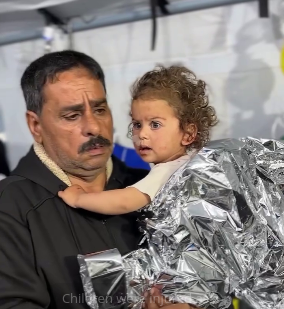At 4:20 AM on Thursday morning, Israeli forces bombed the home of the Al-Gharbawi family in the Al-Saftawi area, northwest of Gaza City, killing seven family members, including children.
Several children were injured as a result of targeting the tents of displaced people in Jabalia al-Balad, north of Gaza.
One person was killed and several wounded as a result of the occupation aircraft bombing a house near Al-Quds Open University, west of Gaza City.
Several children were injured as a result of the occupation forces’ bombing of a tent for displaced people in the Za’rab area in the Mawasi area of Khan Yunis, south of the Gaza Strip.
These latest bombings part of the ongoing Israeli assault on Gaza that began on October 7, 2023, continued for 16 straight months, paused for two months in January and February, but resumed again last Tuesday, when Israeli forces broke the carefully-negotiated ceasefire and returned to day and night bombings of all parts of the Gaza Strip.
The death toll from the Israeli aggression on the Gaza Strip since October 7, 2023 has risen to 50,183, and the number of injuries to 113,828.
The intensive airstrikes and indiscriminate shelling have resulted in the deaths of tens of thousands of civilians, the displacement of vast numbers, and a radical shift in Gaza’s demographic structure.
According to official statistics, the occupation committed 11,850 massacres against families, resulting in the complete annihilation of 2,165 families and the loss of 9,272 members from 5,064 other families.
Ismail Thawabteh, Director General of the Government Media Office in Gaza, said, “Two million Palestinians have been internally displaced since the start of the war, which has had catastrophic effects on the most vulnerable groups in the Strip.”
He reported that the raids resulted in the deaths of more than 17,954 children and 12,365 women. Another 39,384 children lost one or both parents, while 14,323 women lost their husbands.
Al-Thawabat warned that “the demographic changes resulting from the war will have far-reaching effects at various levels, most notably an imbalance in the population due to the targeting of families and the complete loss of thousands of families.”
He continued, “The war has created a crisis in the social structure due to the increasing number of widows and orphans, increasing the social burden with the increasing loss of the primary breadwinner.”
He added, “In addition to the enormous economic pressure resulting from the complete destruction of more than 165,000 housing units and mass displacement, this has altered population stability patterns and increased poverty and unemployment rates, with initial losses exceeding $41 billion.”
Approximately 1.5 million of the approximately 2.4 million Palestinians were left homeless after the war of extermination destroyed their homes, and the Strip entered the first stages of famine due to Israel’s closure of the crossings to humanitarian aid.
The Gaza Municipality stated that the war of extermination reshaped the demographic map of Gaza. The Strip today is no longer what it was before the war, with population density doubling in some areas while others have been completely emptied.
The municipality noted that the displacement has increased pressure on basic services, particularly water and sanitation, and has caused 360,000 tons of waste to pile up in the streets, potentially leading to the spread of epidemics.
It emphasized that this demographic change is not just a matter of numbers; it is a change in the identity of Palestinian society and the destruction of its social foundations.
During the genocide, the Israeli occupation destroyed buildings and infrastructure in the Gaza Strip, rendering it uninhabitable in an attempt to forcibly displace Gazans.
On March 4, an emergency Arab summit on Palestine adopted a plan to rebuild Gaza without displacing Palestinians. The plan, which is expected to take five years and cost approximately $53 billion, was rejected by the Israeli occupation and Washington.

